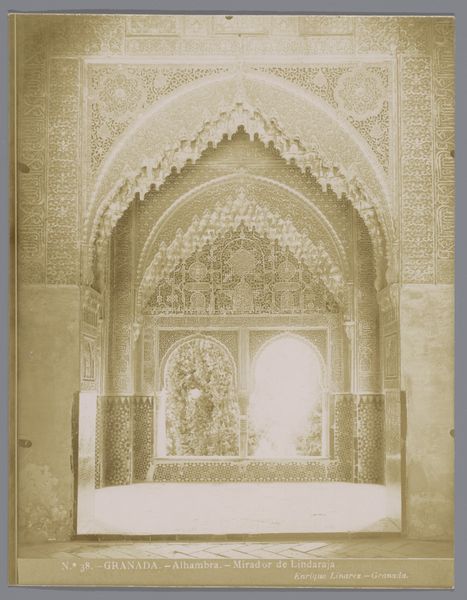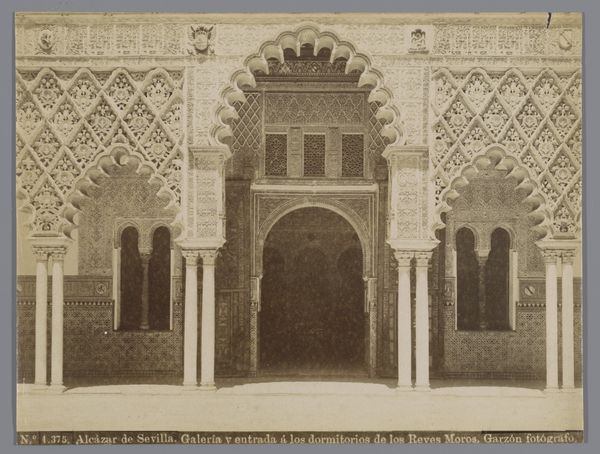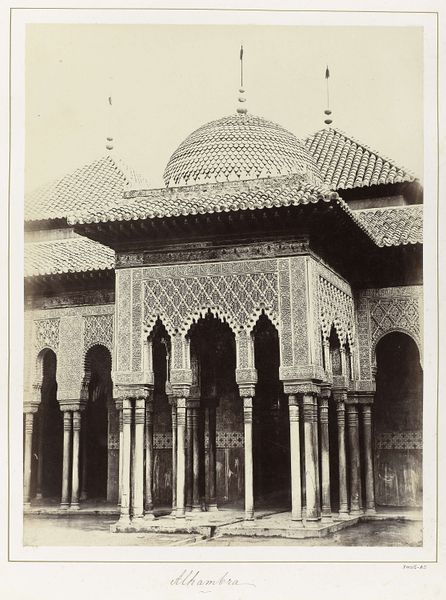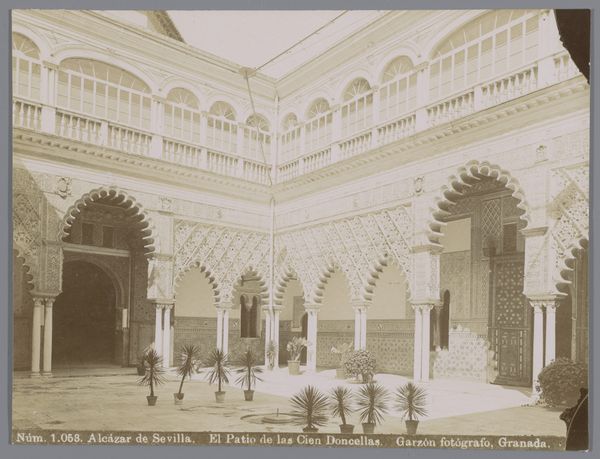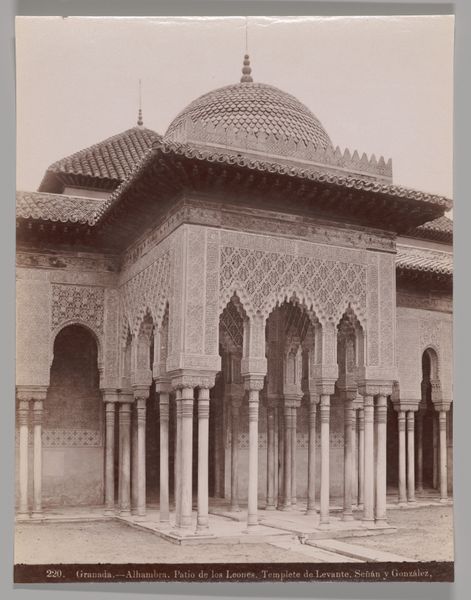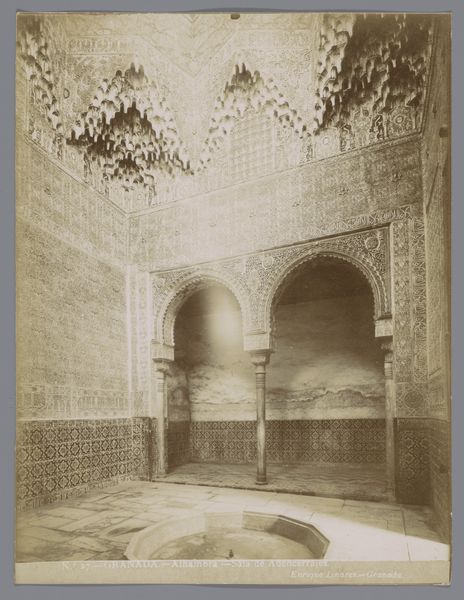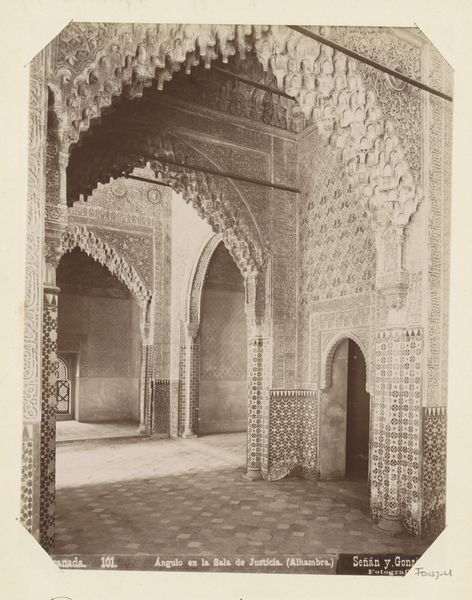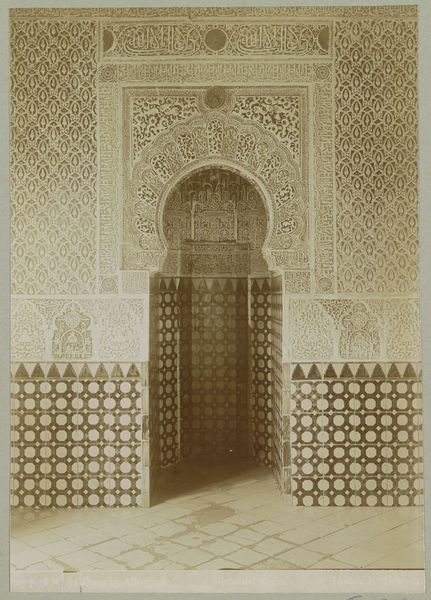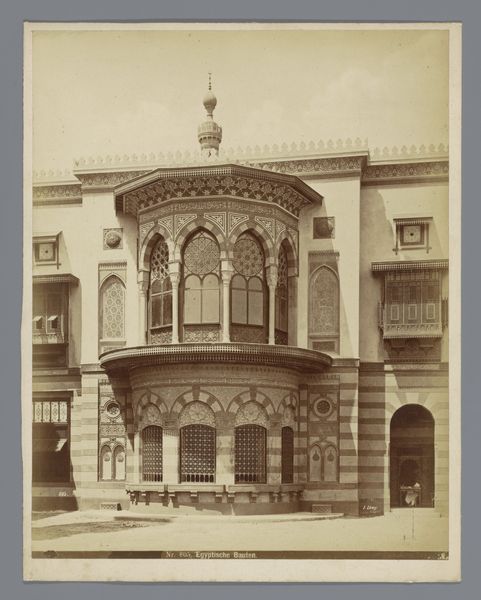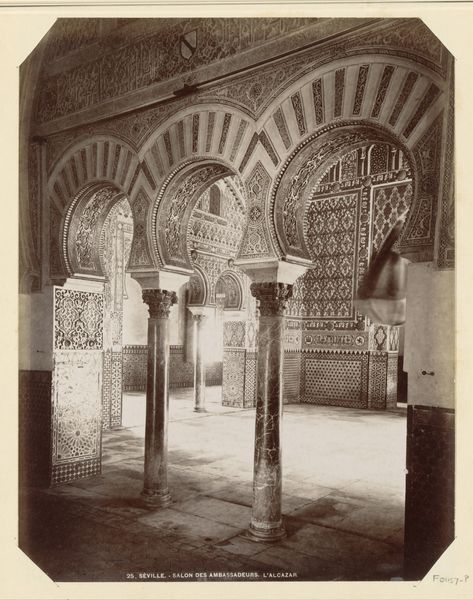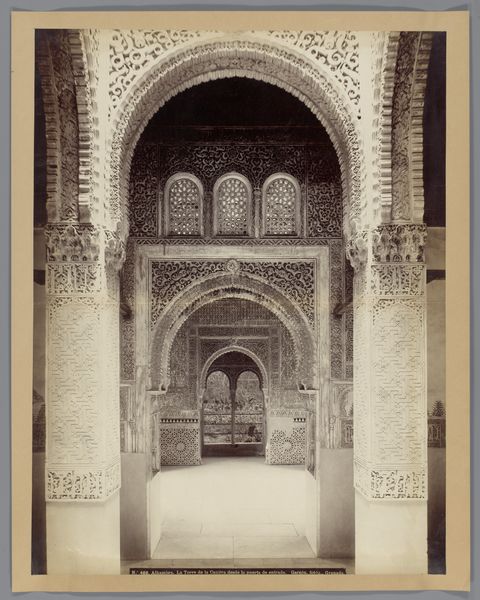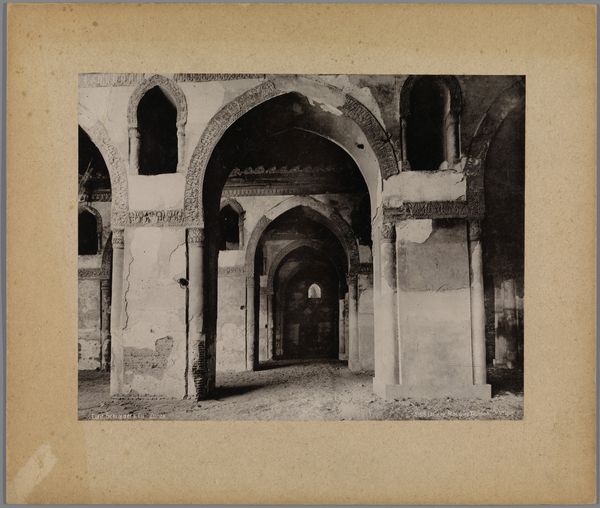
photography, architecture
#
architectural landscape
#
landscape
#
historic architecture
#
traditional architecture
#
photography
#
cityscape
#
islamic-art
#
architecture
#
historical building
Dimensions: height 205 mm, width 155 mm
Copyright: Rijks Museum: Open Domain
Curator: Let’s discuss this compelling photograph entitled “Patio de las Muñecas van het Koninklijk Paleis in Sevilla,” attributed to Rafael Garzón, dating from approximately 1880 to 1900. The sepia tones immediately conjure a sense of bygone era. Editor: My first impression is one of serenity, but there is a haunting stillness to the space. The repetition of arches, those ornate patterns—it speaks to a rich history, but also maybe hidden stories and forgotten labour. Curator: Absolutely. When we examine the meticulous craftsmanship visible here, specifically in the tilework and plaster carvings, we must acknowledge the numerous hands involved in the construction and decoration of this courtyard. These artisans' skill and labour directly contributed to its grandeur. The materiality of those surfaces--what was imported and who controlled those flows matters here too. Editor: And the patio's title, "Patio of the Dolls," whispers tales of the marginalized. Dolls often symbolize childhood, innocence… yet juxtaposed with a royal palace, the name suggests perhaps a veiled commentary on power structures and who gets to play within them. Could the 'dolls' refer to women, or others historically silenced within such spaces? Curator: It’s fascinating how this photograph invites us to consider consumption of space and materials. How were those materials procured? Who benefitted, and who was potentially exploited in creating such luxury? The architectural decisions here highlight, at least implicitly, the material choices that embody privilege and cultural power. Editor: Consider the gaze of the photographer, Garzón himself. As a historical document, this image tells us not just about the palace, but also about the prevailing perspectives of the time, maybe perpetuating romanticized or colonial views. We can think about his place in recording this architecture during the burgeoning of tourist economies. Curator: These insights emphasize the role of labor in aesthetic experiences. Even a still photograph captures echoes of human energy embedded in stone and tile, reminding us that artistic and architectural masterpieces are seldom isolated acts of individual genius. They are products of broader socio-economic networks. Editor: Precisely. It's about acknowledging that architecture, even in its stillest photographic representation, has always been an active participant in dialogues about class, power, and representation, as we reimagine whose stories are embedded in this space, even beyond its original intent. Curator: Examining the Patio through that lens certainly adds layers of richness. The materials really do tell a powerful story. Editor: Agreed, an invitation to listen deeply to the palace's layered past and think about those excluded from its beauty and privilege.
Comments
No comments
Be the first to comment and join the conversation on the ultimate creative platform.

